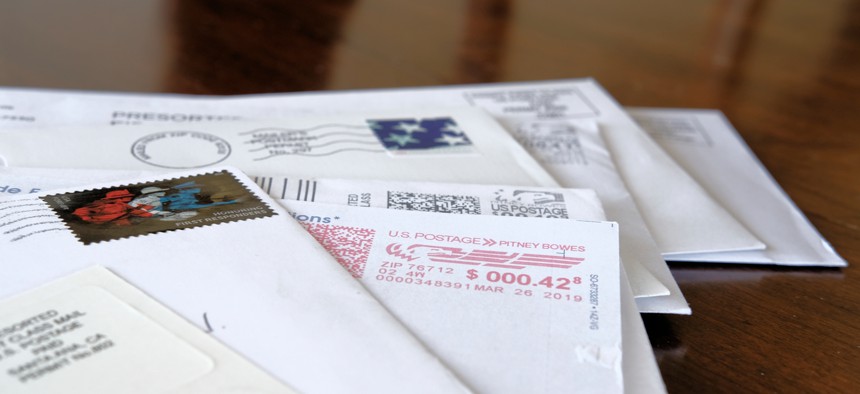
ImagenX/Shutterstock.com
USPS, Regulator Pursue Different Paths in Fighting Court Ruling on Rate Hikes
Allowing the court's ruling to unwind the stamp price increase would cause "substantial disruption and uncertainty," Postal Regulatory Commission says.
The U.S. Postal Service and its regulator are pursuing two different tracks as they seek to minimize the disruption and damage from a recent court ruling that deemed the 2019 stamp rate hike illegal.
The mailing agency itself has asked the U.S. Court of Appeals for the D.C. Circuit to rehear the case. A panel of three judges on the court ruled in September that the Postal Regulatory Commission—an oversight body that must approve all proposed USPS rate hikes—failed to consider all factors related to the increase, thereby violating the Administrative Procedures Act. In filing its appeal, USPS argued the court fundamentally misunderstood PRC’s role and applied the APA as if the regulator, rather than postal management, were responsible for setting the rate. The Postal Service asked the same three-judge panel to rehear the case.
The Postal Service proposed, and PRC approved, a five-cent increase for stamps in 2019, a 10% jump. It was the largest-ever price hike for a stamp and the largest by percentage since 1995. The commission approved the spike after determining the Postal Service’s proposal complied with requirements, such as ensuring any price surge does not exceed the rate of inflation. USPS did so because prices increased across the agency’s offerings by an average of 2.5%, within the inflationary cap.
PRC, meanwhile, is forging its own path to allow the price hike to remain in place. The court, in an opinion written by Circuit Judge Neomi Rao, a Trump appointee who formerly worked in the White House as director of the Office of Information and Regulatory Affairs, called the increase “remarkable” and lacking in justification.
“The commission failed to provide an adequate explanation for the stamp price hike, and, relatedly, failed to respond to public comments challenging the stamp price hike under the [2006 Postal Accountability and Enhancement Act]’s statutory factors and objectives,” Rao wrote.
Instead, Rao said on behalf of the three-judge panel, PRC simply crunched the numbers and determined the Postal Service’s proposal complied with its statutory caps for price increases. In order to avoid the “substantial disruption and uncertainty to the Postal Service and general public that would result if the court’s decision” to vacate the price increase went into effect, PRC recently issued a new order approving the rate hike. The commission said the court did not prevent it from ultimately approving the new rates, so long as it adhered more closely to its requirements under various federal statutes.
To address the concerns outlined in the court’s decision, the regulators said, “This order provides an explanation for the stamped letters price increase, addresses the relevant statutory objectives and factors and responds to the comments” issued by members of the public on the rate increase proposal. “Ultimately, the commission determines that the First-Class Mail price adjustments are consistent with applicable law.”
PRC said its new order would take effect as soon as the court’s decision to vacate the price increase took effect, thereby ensuring prices never actually reverted to their 2018 levels. With the Postal Service’s appeal now pending, the timing of that process remains in flux. As of Friday, the price of a stamp remained at 55 cents.
Last month, USPS proposed keeping the price of a stamp flat in 2020.
USPS has asked a panel of the U.S. Court of Appeals for the D.C. Circuit to rehear the case, not the full court, as originally reported. The story has been corrected.
Image via ImagenX/Shutterstock.com.







